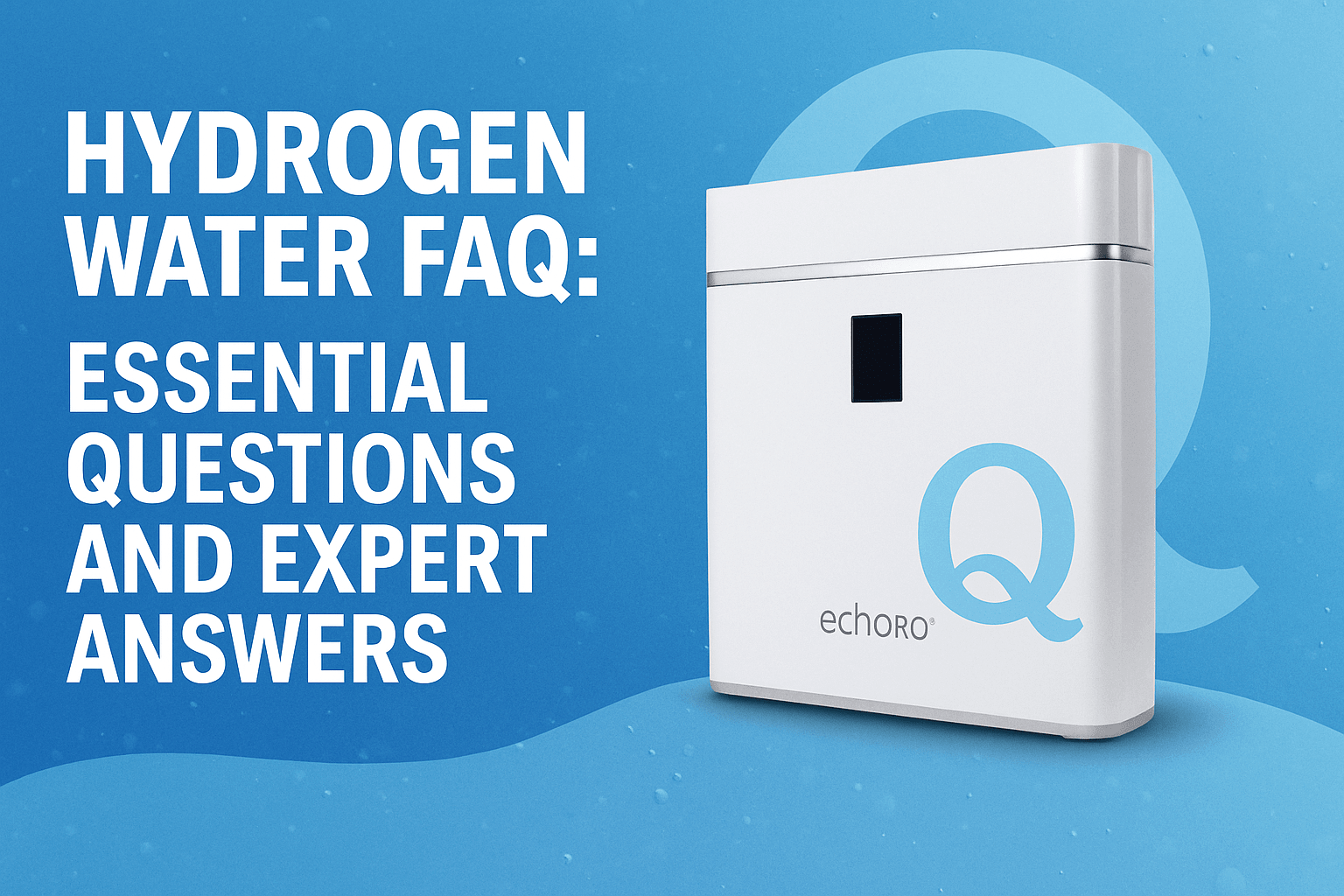
Hydrogen Water FAQ: Clear Answers, No Hype
What it is, how it differs from alkaline water, safety, real-world use, and what the research currently supports.
Key Takeaways
- Hydrogen water is plain water with dissolved molecular hydrogen (H₂). It’s different from alkaline water, which focuses on higher pH.
- Taste stays the same; the difference is dissolved gas measured in ppm. Freshness and storage affect how much H₂ you actually drink.
- Evidence is early and mixed. Small human trials and preclinical work explore oxidative stress and recovery. Larger, longer studies are needed.
- Start simple: one or two fresh servings per day and adjust. See fundamentals in the Hydrogen Water Ultimate Guide .
Need a deeper primer? Read the Ultimate Guide for ppm, storage, and device formats.
What Is Hydrogen Water?
It’s drinking water that contains dissolved molecular hydrogen gas. The water itself doesn’t change character; a small amount of H₂ dissolves into the liquid. Daily-use devices often land around 0.8–1.6 ppm depending on source water, temperature, and settings.
For a fast overview of ppm, storage, and formats, start with the Hydrogen Water Ultimate Guide .
At a glance
- Focus: dissolved H₂ (ppm)
- Taste: essentially unchanged
- Freshness matters: H₂ slowly dissipates
- Where to begin: Ultimate Guide
Hydrogen vs Regular and Alkaline Water
| Factor | Hydrogen Water | Regular Water | Alkaline Water |
|---|---|---|---|
| Primary feature | Dissolved H₂ (ppm) | H₂O only | Higher pH from minerals/ionizers |
| Taste | Neutral | Neutral | Often “smoother” at higher pH |
| What changes | Gas content (H₂) | Nothing added | pH and mineral profile |
| Best for | Users prioritizing H₂ without taste change | General hydration | Users who prefer higher pH mouthfeel |
Deep dives: Hydrogen Water vs Alkaline Water and format choice in Bottle vs Machine .
Is Hydrogen Water Safe?
For most healthy adults, yes. Molecular hydrogen has shown good tolerability in small human trials. If you’re pregnant, nursing, managing a condition, or taking medication, consult your clinician first. Consistency improves when you focus on freshness and simple storage habits.
Storage Basics
- Keep servings cold and sealed.
- Minimize headspace and agitation.
- Drink soon after generation. More tips: How to Store Hydrogen Water and How Long H₂ Lasts .
What Does the Research Say?
Findings vary by study design and population. Several small trials and preclinical papers explore hydrogen’s role in oxidative stress and recovery. Treat it as a supportive wellness habit, not a cure-all. For citations and context, see the science section in the Ultimate Guide .
Where it’s most practical
- Before or after workouts
- First thing in the morning
- Travel days with a portable bottle
Good to remember
- Fresh preparation tends to yield more consistent ppm.
- Cold, sealed storage helps retention.
- Choose a format that fits your routine: Bottle vs Machine .
Athletes and Recovery
A simple routine is one fresh serving before training and another after. Some studies report lighter perceived fatigue and lower exercise-related markers. For timing and sport-specific tips, see Athletes: Hydrogen Water & Performance and our recovery guide.
How It’s Made
Modern systems typically use SPE/PEM electrolysis to generate H₂ directly into the water. Portable bottles run short cycles for single servings. Countertop and under-sink units pair hydrogen generation with filtration for daily capacity. Output depends on temperature, mineral content, and cycle or flow settings.
Format Quick Compare
| Format | Typical ppm | Best For |
|---|---|---|
| Portable bottle | ~0.8–3.0 (by cycle) | Travel, office, gym |
| Countertop | ~1.0–1.6 | Households, daily capacity |
| Under-sink | ~1.0–1.5 | Minimalist kitchens, RO homes |
Explore Echo systems in our Echo collection or see our top picks in Best Machines 2025 .
Frequently Asked Questions
Note: This article is general wellness education and isn’t medical advice.
Ultimate Guide
Everything in one place.
Storage Guide
Keep ppm more consistent.
Bottle vs Machine
Match format to lifestyle.

